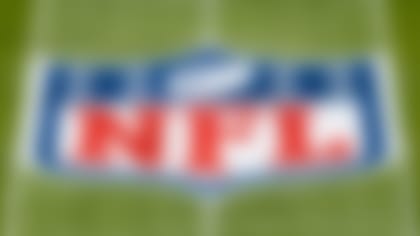The biggest play of the 2009 NFL season was made by a relatively unknown New Orleans Saint. That is, he was relatively unknown before the fourth quarter of Super Bowl XLIV.
Now, Tracy Porter's name will go down in history alongside the heroes of Super Bowls past.
Don't be mistaken: This wasn't a gift-wrapped mistake by the Indianapolis Colts. Porter deserves praise for his 74-yard, game-sealing interception return for a touchdown.
Think you know football? Test your knowledge at GMC Sierra's Engineered
to Win Challenge and enter for a chance to win a 2010 GMC Sierra.
In what had to be the toughest post-game news conference of his career, Colts quarterback Peyton Manning said Porter "made a great play."
"That's all I can say about it," Manning added. "Porter made a heck of a play."
This is where the game was lost by Indianapolis -- the decision to go for the marker, not the end zone.
Saints defensive coordinator Gregg Williams wasn't worried about the home-run play, and neither was Porter. Williams called a blitz designed to force the ball quickly out of Manning's hands. The situation, the formation and Colts wide receiver Reggie Wayne's first few steps told Porter exactly where to go.
On more than 90 percent of Indianapolis' offensive snaps this season, Wayne lined up as the outside receiver. Based on film study, Porter knew that when Austin Collie lined up outside, then motioned inside, Wayne would run a short, in-breaking route at the first-down marker.
Wayne is an All-Pro receiver, and when he vertically attacks a man-to-man defender, 99 times out of 100 that defender backpedals. Not only is it a natural instinct to backpedal, but it's completely insane not to do it.
But Porter knew what was coming and took the risk. He matched his coverage technique to Williams' pressure and used a "flat-footed read" -- a technique in which a cornerback squats, keeping his feet planted on the ground, and doesn't bail out when vertically attacked.
I can only imagine the split-second of panic that Wayne felt when he recognized Porter wasn't giving ground. You can almost see it from NFL Films' isolation shot of Wayne on the play. He threatened Porter to the outside for five full steps, but instead of backpedaling, the cornerback slid to the inside, waiting to jump the exact route that Wayne was running.
By the time Wayne sensed that something was wrong, it was too late. The ball was in the air and there was nothing he could do to stop the interception.
Manning is being vilified for costing the Colts a Super Bowl championship. Some media members believe he ruined his chance to be considered the greatest quarterback of all-time. They can say or write whatever they want, but the fact is that Manning completed 31 of 45 passes for 333 yards, and he was the biggest reason his team had a chance to tie the score that late in the game.
Based on the coverage, Manning and Wayne did nothing wrong. Typically, when they run that play against man-to-man coverage, the defender backs up and Manning routinely squeezes a pass into Wayne for the first down.
We always want to place blame and point out who made the mistake, but quite honestly, there's not always somebody to blame. And greatness doesn't always come from the "greatest" players.
The preceding events in the game produced a set of circumstances that caused the Colts to go for the first down instead of the touchdown, then allowed Porter an opportunity to be the hero.
Give credit to Williams and Porter, who outsmarted and outplayed the Colts at the most critical moment of the season.



